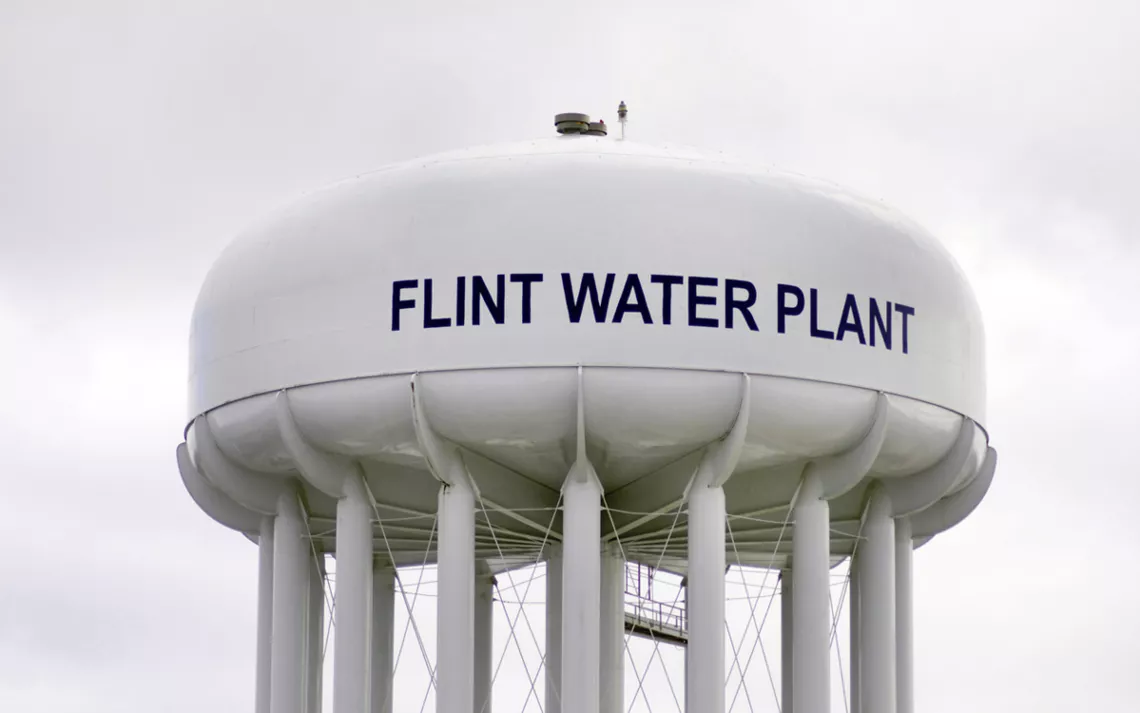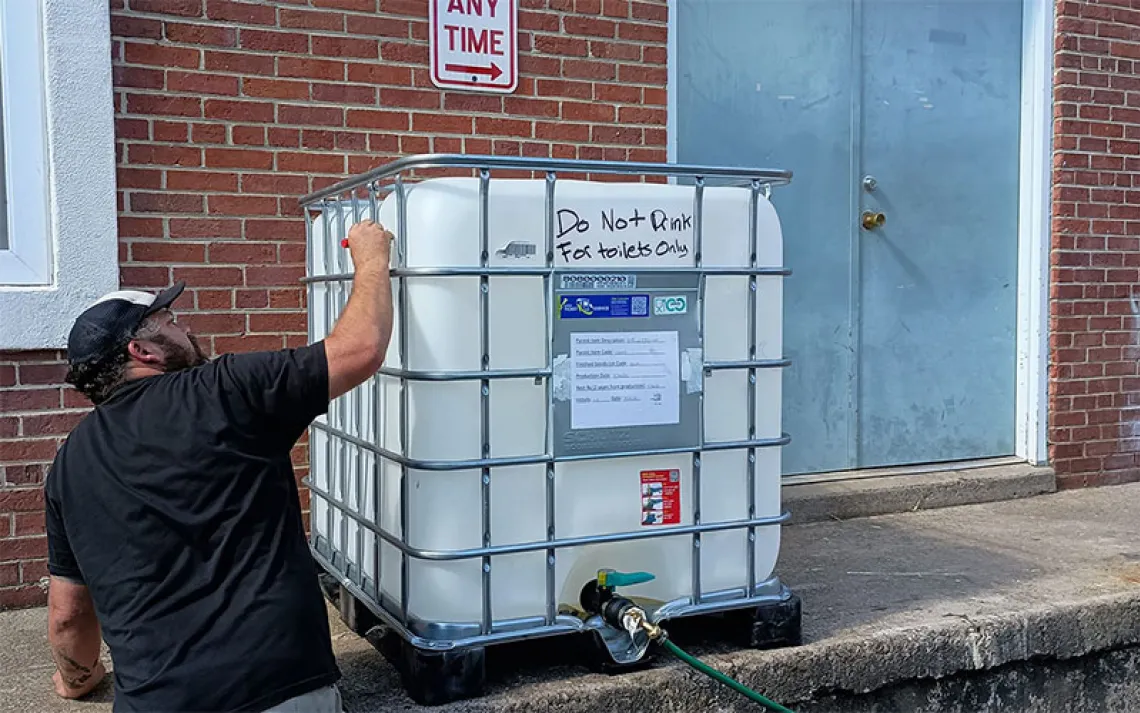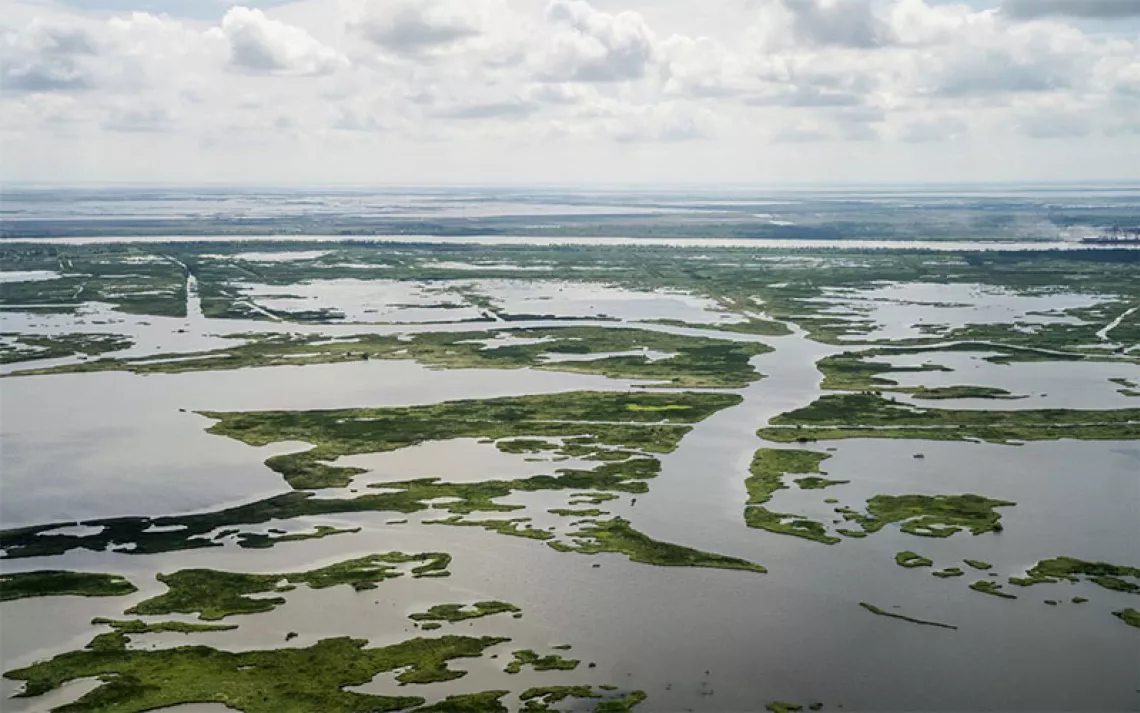Flint Is Slowly Getting Better, Say Scientists Who Exposed Water Crisis
Dr. Mona Hanna-Attisha and Professor Marc Edwards reflect on Flint’s progress

Photo by IStock | Linda Parton
Last month, Dr. Mona Hanna-Attisha, a Michigan pediatrician and Virginia Tech professor, and scientist Marc Edwards were awarded the first-ever MIT Media Lab Disobedience Award for their work in exposing dangerously high lead levels in Flint’s water. The $250,000 award honors those doing what they’re not supposed to do—for the greater good. Hanna Attisha and Edwards recently shared with Sierra how they felt about being decorated for disobedience, and about the situation in present-day Flint.
Flint residents had been raising alarm about the water since April 2014, when the main source for water for the city was switched from Lake Huron in Detroit to the Flint River. In the summer of 2015, Edwards was contacted by Leann Walters, a Flint resident whose son had lead poisoning.
Walters sent samples to Edwards, and he tested them. “That’s when we found the worst,” Edwards says. “The very high levels of lead in her water were three times hazardous waste levels, and she figured out her child had elevated lead in their blood and that water was the source.” After running comprehensive analysis on the water in Walters's home, he decided to do the same for homes across the city, spending thousands of dollars in the process.
Not too far away that same summer, old high school friend and former EPA water expert Elin Betanzo told Hanna-Attisha that there might be problems with lead in Flint’s water supply. Hanna-Attisha realized the danger of the situation immediately. She had been involved in an environmental club in high school, she studied environmental health at the University of Michigan, and became a pediatrician because, as she put it, “Kids are impacted most by anything that happens in the environment.”
“I know what lead does. It’s an environmental injustice and that’s what prompted my research,” says Hanna-Attisha. “When any pediatrician or anyone in public health hears the word 'lead,' it’s a call to action.”
In many states, lead testing has been mandatory for all children, but Michigan was not one of them. The earliest symptoms of lead poisoning (headaches, stomachaches, problems in school) are hard to differentiate as they are common in kids with normal lead levels as well. “It’s a silent pediatric epidemic,” says Hanna-Attisha. “It’s been really hard to eliminate children’s exposure to it, because too often we pick it up too late.” A better health care system would detect and remove lead from the environment before children come into contact with it. Instead, says Hanna-Attisha, “we are using kids as canaries.”
When she looked into records at Hurley Children’s Hospital and saw the data, it was clear: Twice as many Flint residents under the age of five had elevated levels of lead in their blood since the city began using the Flint River as its main water source. Flint had a lead poisoning epidemic on its hands, and it had been happening for over a year.
Because the public health risk was so great, Hanna-Attisha broke scientific protocol and held a press conference about her findings in September 2015, without submitting it to scientific journals and without going through peer review first. Her research was immediately challenged by both the Michigan Department of Health and Human Services, which said that her work didn’t match their own, and by the Michigan Department of Environmental Quality (DEQ), which insisted that Flint’s water met state and federal standards.
Similarly, Edwards had the same challenges with his first lead exposure epidemic back in 2001. He worked six years as a volunteer to expose dangerous lead levels in Washington, D.C. The water crisis in D.C. was three times higher, with five times the population of Flint, says Edwards. In the case of D.C., though, he says, “those agencies involved didn’t learn anything from the tragedy except that they could get away with it.” The city still had reports of high levels as recently as 2010, and while the situation has gradually improved, officials have continued to violate the federal Lead and Copper Rule.
Because the EPA handled things so poorly in D.C., Edwards got the idea to begin saving money for future research. He knew that lead-tainted water would inevitably happen again, so when he got the call from Leann Walters in 2015, he wasn’t surprised. Walters had a draft report from Miguel Del Toral, an EPA official, about tests the EPA had done on the water coming out of her faucet. Water with lead levels of 5,000 parts per billion is considered hazardous waste by the EPA, but one sample from the Walters’s house had more than 13,000 parts of lead per billion. “She found they were breaking the law,” says Edwards. Walters had “basically done all of the hard work.”
Edwards, Walters, and Del Toral tried to work within the system at first but were silenced at every attempt. When that happened, says Edwards, “We knew we had a battle on our hands.” Edwards and about 45 student volunteers raced to test the water in homes all over Flint and carry out the research that the EPA had refused to let Del Toral do.
Right around the same time that Hanna-Attisha released her results, Edwards released his. He found that 10 percent of homes tested had 25 parts per billion of lead or more—nearly double the 15 ppb allowed in federal guidelines. Like Hanna-Attisha, he was attacked by the city, DEQ, and local EPA officials, who said that their own tests showed lead levels in Flint were within the legal limit.
The response was exactly what Edwards feared. He had every expectation of the cover-up dragging on for years, the way that it had in D.C. But then something surprising happened: Within weeks, the Flint cover-up collapsed. In January 2016, President Obama declared a state of emergency about Flint’s water supply.
“We potentially sacrificed everything to do the right thing, with no financial incentive,” says Edwards. “For some reason we survived and people acknowledged that this was one of the most serious environmental crimes perpetrated by government that’s been exposed in U.S. history.”
The situation in Flint is still difficult. Today, residents still use lead filters and bottled water for safety, and they still pay bills for water that they can’t use and for health problems that were the result of the crisis. But the $87 million settlement reached between residents and the city of Flint mandating pipe replacement has already begun to bring new water infrastructure into some parts of the city. All of Flint’s 18,000 damaged pipes are set to be replaced by 2020, and that replacement has already started.
“2020 sounds like a long time, but there’s only two other cities in America that have entirely replaced their lead pipes: Lansing, Michigan, and Madison, Wisconsin. “They both did it over a decade,” Hanna-Attisha says. “So mandating it over three years is actually unprecedented.”
Hanna-Attisha now directs the Pediatric Public Health Initiative, a program and partnership between the University of Michigan and Hurley Children’s Hospital that will track children and adults directly affected by Flint’s water and help them find treatment for any health issues that come from it.
Edwards continues his research and has set aside half of the prize money specifically for Flint. In his opinion, the water crisis has truly “shaken the confidence” Flint residents have in the EPA and in water utilities. But it also reveals an issue that other cities share: “It exemplifies the problem between infrastructure and equality,” Edwards continues. “These post-industrial cities and rural America can’t afford the water system. They can’t afford to maintain it much less improve it.”
He proposes the idea that the federal government provide money for safe drinking water for those who cannot afford it, in the same matter that it provides money to ensure a basic level of education for children.
Neither of them feels like they deserved the Disobedience Award. “I think there were over 7,000 people nominated,” says Hanna-Attisha. “There were climate change scientists, Standing Rock activists, immigrant dreamers, and all these amazing people doing this incredibly disobedient work at a time in our nation where it has become so fundamentally important.”
Edwards does think, however, that the idea of the award is very important. “In general, folks who do the right thing too frequently speak out and they become institutional roadkill,” he says. “This award honors those who value loyalty to the truth and humankind, not to institutions.”
That said, Hanna-Attisha adds, it’s a little tricky to explain winning it to kids. “Its gotta be the best-named award ever, which is very difficult to explain to my small children in regard to disobedience.”
 The Magazine of The Sierra Club
The Magazine of The Sierra Club



